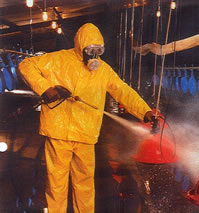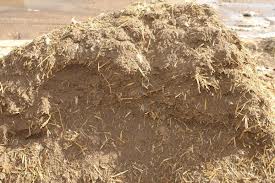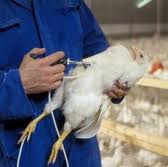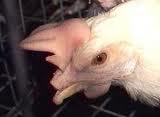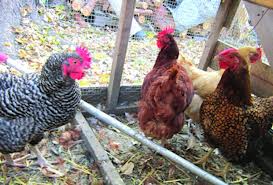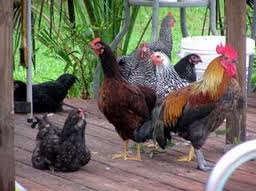CARE AND MANAGEMENT OF CHICKS
This is also known as brooding management. In case of layer birds, rearing chicks from day-old age to 7-8 weeks are usually reared in brooder houses and then transferred to grower houses, whereas in case of broilers even after 3 weeks of brooding, they are reared in the same house by increasing space and other requirements and by removing brooders.
In case of single flock rearing, the best time to house the chicks for laying in future, is from January to March of year, so that pullets will be in high production during winter months, when egg prices are– generally better. But, this is difficult to adopt for multi-age rearing.
The managemental care of chicks can be studied step by step as under:
Adequate Ventilation
The brooder house must be properly ventilated at the same time it should be devoid from drafts. The drafts can adversely affect growth and liveability of chicks. The excessive dust in poultry house can cause irritation of respiratory tract of a day old chicks and can increase disease incidence. Similarly, high moisture levels also can lead more ammonia fumes causing again irritation of eyes and respiratory distress.
Maintenance of Sanitation and Hygiene
The brooder house must be carefully cleaned and disinfected well in advance before housing new batch of chicks in it. The usual and required practice is the house should be give rest of 3 to 4 weeks in layer operations and around 2.5 weeks in broiler operations after cleaning and disinfection of house. The appliances and equipments like feeders, waterers, brooders which can be removed, be taken out and cleaned, disinfected and allowed sundrying of them. The manure, should be removed and the floor may be scrapped to remove all dirt. The inside and outside of house also be cleaned under pressure water for proper removal of dirt and dust. Before doing this the cobwebs must be removed.
Sumithion or Malathion spray and flame-gun blowing of sheets and wire netting help in controlling insects, mites and ticks. Fresh litter be used for every new batch. The old litter should not be recycled to save expenditure. Adaptation of all in all out system is best to control diseases in poultry but it is difficult to follow for maintaining continuity of farm production. Therefore, at least chicks should be brooded away from layers or adult birds. Similarly, separate workers should be provided for chicks and adult birds to avoid cross-contamination due to direct contact. In the same way movement of workers and shifting of equipments from shed to shed should be restricted. The disinfectant foot bath necessarily be provided and used at entrance of each house. The outsiders (visitors) should be banned to enter houses of at least chicks and growers.
Bedding or Litter
It is important in case of deep-litter rearing. The convenient bedding material like rice husk, saw dust or ground-nut hulls called as litter be spread on floor with depth of about 4.5 cm. Further it can be increased to 8-10.5 cm depending on need as the age advances. The material like sugar-cane bagasse should not be used, as the sugar content in it facilitates growth of fungus on it, leading to respiratory diseases like aspergillosis. Daily raking or stirring of litter be practised to avoid caking, to keep it dry and loose to reduce ammonic al odour.
The appropriate moisture content of litter carries lot of importance because low moisture leads to dusty litter resulting in respiratory ailments while high moisture results in caking and increased heat. On an average litter should contain around 18 to 24 per cent moisture and a litter of desired condition should not form a ball when pressed in hand.
Space Under Brooder
Around 50 to 66 cm2 space under brooder per chick is recommended. This mean a hover of 1 metre diameter can house 270 chicks. In case of small pens, length and width of pens should also be considered to accommodate number of chicks under brooder. Inadequate space leads to piling, increased disease incidence, studied growth, starvation and subsequently more percentage of culls.
Chick Guard
A barrier to avoid straying away of new chicks from heat source in younger age placed at a distance around brooder in circular manner is known as chick guard. The brooder guard also protects baby chicks from drafts. Usually it is placed at a distance of 85-90 cm from edge of brooder initially and can be increased to 130 cm as the age advances. Generally it is used upto 7 to 8 days initially. The height is usually 40-45 cm.
Temperature Maintenance
Maintenance of appropriate temperature during brooding new chicks is necessary. The variation towards higher or lower side leads to more mortality or slower growth. The temperature is usually measured at level of 6 cm above floor and 6 to 8 cm inside the edge of warm zone of brooder. The temperature in first week should be around 33°C (95°F) which may be subsequently reduced by 2.6°C (5°F) each week till it reaches to room temperature around 20.5°C. But chicks are more comfortable in slightly lower temperature than recommended. The house temperature should be lower by 8 to 12°C than brooder temperature. The height of brooder depends on need of brooding temperature but at least 10 to 14 cm clear space above chicks should be available. The bulbs of different intensity like 200, 100 or 60 watts can be used to reduce or increase temperature. The infra-red lamps of 250 watts can also be used with an added advantage of germicidal effects on organisms. Pleasant movements with uniform scattering of chicks under brooder is correct guide for accuracy of temperature.
Floor Space
Appropriate floor space as per age, size and type of chicks is an important factor governing performance of chicks. If slightly more space than requirement is alloted it does not matter much, but less space than recommended, adversely affects overall performance than recommended, adversely affects overall performance of chicks. inadequate floor space leads to slower and uneven growth; more number of culls, increased mortality, poor feed, efficiency and in extreme cases pecking and cannibalism. Floor space of about 450 cm2 to start with is adequate which can be increased by about 500 cm after every 4 weeks till pullets reach to 21 weeks of age. Broiler can be alloted 450 cm2 space initially which may be increased to 850 cm2 after 4 weeks.
Feeder and Water Space
The requirement of feeding space varies from 2 to 7 cm (linear) per chick from 0 to 8 weeks. Similarly, water space required is from (15 to 1.5 cm (linear) per chick. For efficient, growth of chicks frequ.ent feedings (4-5 times in a day) with availability of fresh water all the times are beneficial.
Light
Chicks are provided continuous light, i.e. sunlight is adequate during day time while in the night it can be supplied by using electric bulbs or tubes upto 8 weeks of age. Light helps in faster development of feathers, increased feed intake and essential for vision.
Vaccination and Debeaking
Adopting an appropriate schedule of vaccination is prime requirement of providing proper health care to chicks. The schedule of vaccination varies according to disease prevalence in different areas. Debeaking either on 1st day or on 6-9th day or 3-4th weeks is carried out to prevent cannibalism and feed wastage.
